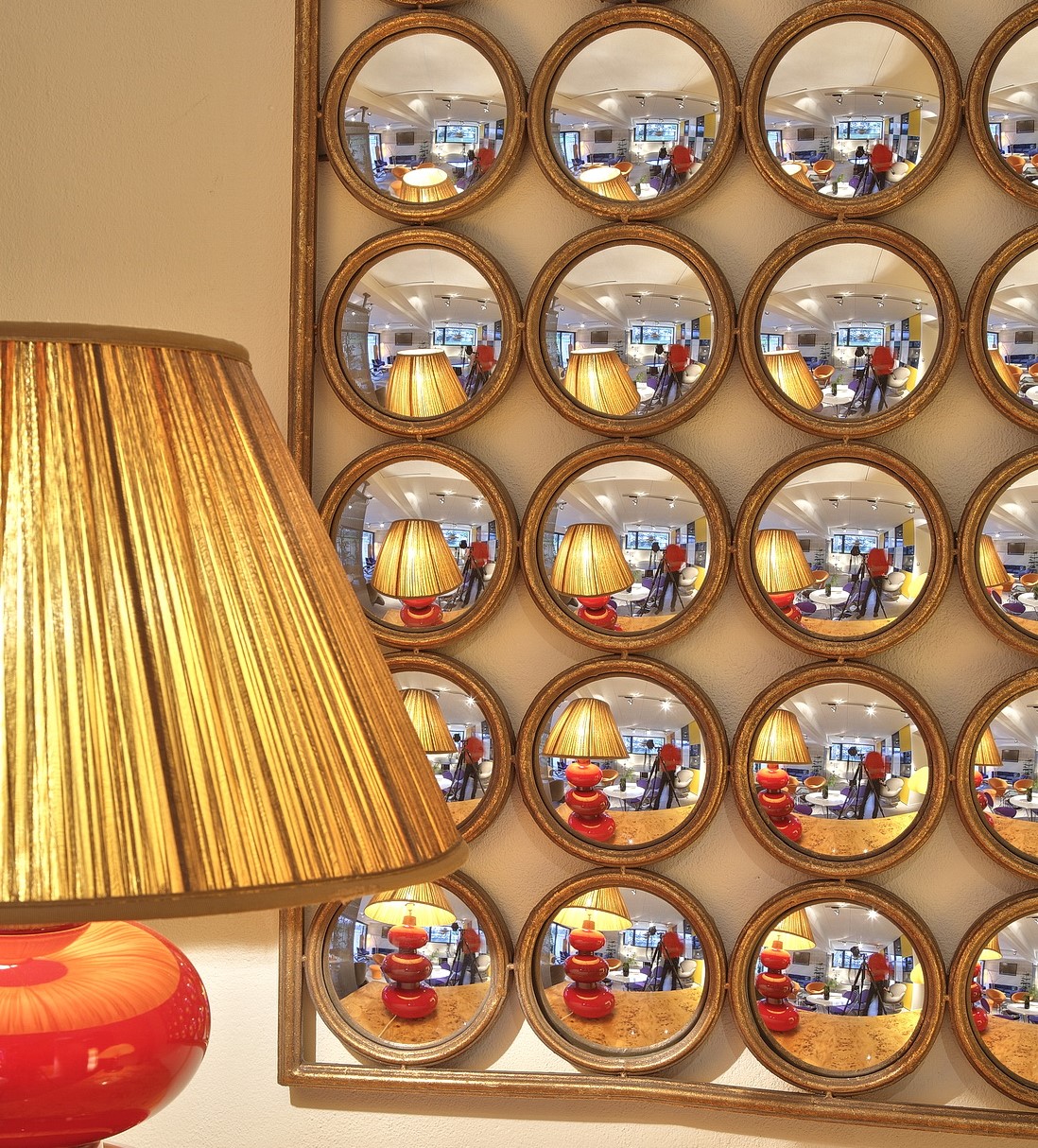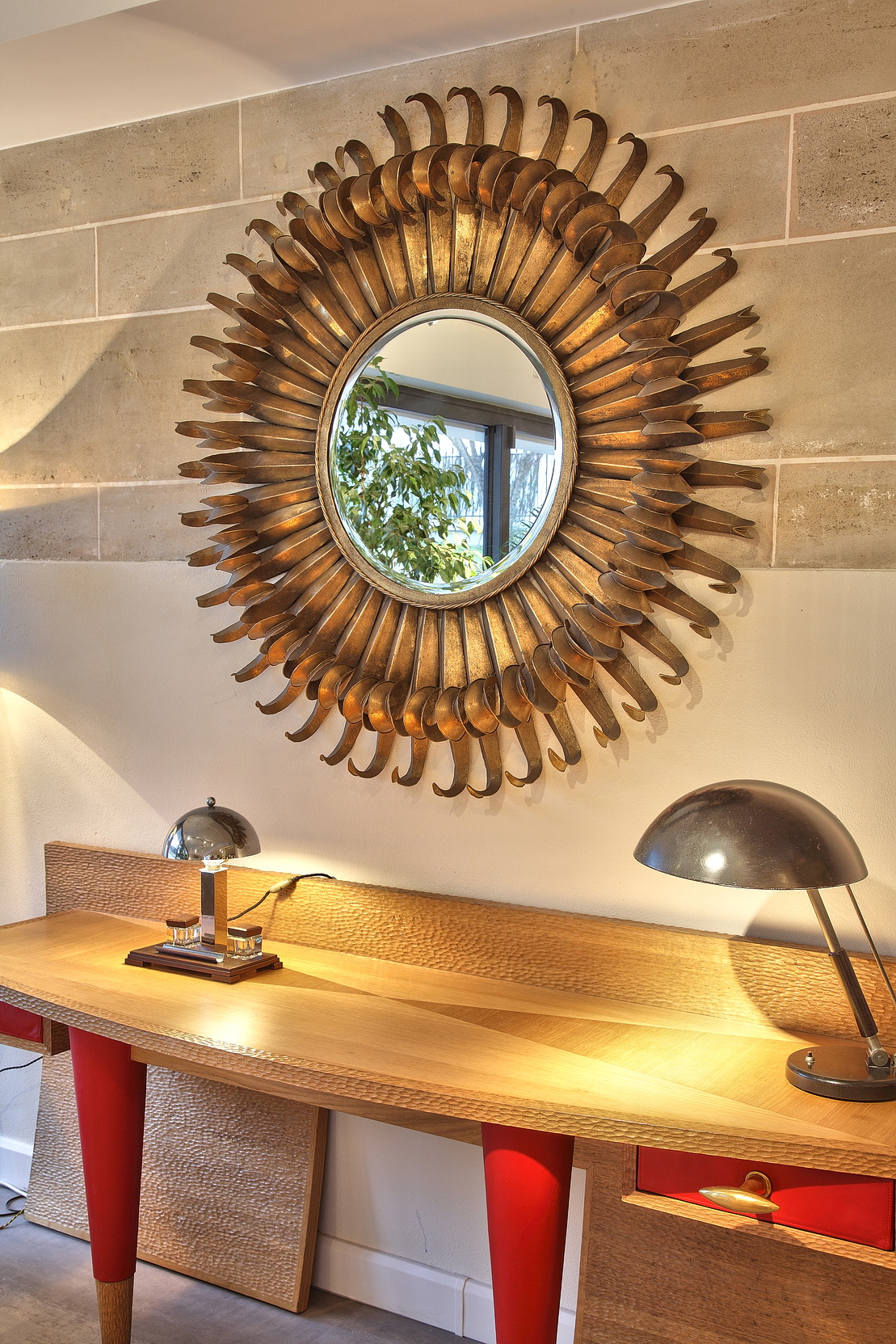
What is a witch's mirror?
A witch's mirror is an object often used in fiction for magical practices or to communicate with supernatural entities. It can also be seen as a symbol of divination or meditation.
A witch's mirror also describes a type of mirror called a "witch's eye" or "banker's mirror ." This , convex mirror allows one to monitor a place without having to physically move.
Indeed, this characteristic of convex mirrors allows their owners to see an entire room without having to change position or turn around. This is why they initially served a surveillance function . Thus, witch mirrors were often placed in locations where surveillance cameras are now commonly found, namely in banks and shops; hence their name, "banker's mirror."
As instruments of power, surveillance, and deterrence, witch mirrors made their way into bourgeois circles as early as the 15th century. This was precisely where servants aroused the suspicion of their masters. These masters were relatively illiterate and more inclined to believe in the veracity of superstitions. Thus, they believed that mirrors continued to see and observe them, even when their master was not present. Hence the most well-known name given to this mirror: the " witch mirror .
Witch's Mirror: Its History
The history of the witch's mirror dates back to antiquity , where mirrors were considered magical and mystical . Mirrors were often associated with divination and witchcraft, and witches were believed to use mirrors to predict the future and communicate with spirits.
During the Middle Ages , superstitious beliefs about mirrors intensified, and mirrors were often associated with witchcraft and black magic. People believed that mirrors could trap souls and that they were capable of causing illness or misfortune by reflecting negative energies.
The witch's mirror was popularized by numerous paintings by Flemish artists . These mirrors appeared during the 15th century , as artists saw them as a perfect way to experiment with optics and, above all, to play with perspective thanks to the multiple viewpoints of this object. One of the most famous paintings is Arnolfini Portrait (1434), which reveals in the convex mirror a rich background of additional figures, thus giving a beautiful depth to the painted scene.
The materials
Witch mirrors can be made from various materials, such as:
- Glass : Glass is the most commonly used material for mirrors. It can be polished and treated to provide a clear and sharp image.
- Metal : Some witch mirrors are made from metal, such as silver or aluminum, for a shiny metallic finish.
- Wood : Mirrors can also be made from wood, offering a natural and organic finish.
- Synthetic materials : some mirrors can be made from synthetic materials such as resins or plastics for a durable and lightweight finish.
Ultimately, the material chosen depends on personal preference and the intended decorative purpose. Glass mirrors are often the most commonly used for witch mirrors due to their availability and clear image quality.
How to incorporate a witch's mirror into your decor?
Witch mirrors can be used in decoration to add depth and visual interest to a space. Their unique shape can help create an optical illusion, visually enlarging the space and reflecting light in an attractive way. Convex mirrors are often used to decorate walls or hung as decorative pieces.
There are several ways to incorporate a witch's mirror into your decor:
- As a centerpiece : use the witch mirror as a focal point in a room by hanging it on the wall or placing it on a console table.
- As a wall decoration : add the witch mirror to a gallery wall to create a cohesive and eclectic look. You can even cover an entire wall with witch eye mirrors for a stunning play of perspective and maximum light.
- As a table accessory : place the witch mirror on a side table or console to add a mystical touch to the space.
- In a boudoir room : use the witch mirror to enhance the mystical atmosphere of a bedroom or bathroom.
An antique "witch's eye" mirror can be combined with various elements to create a cohesive decor. Here are a few ideas for incorporating a vintage witch's eye mirror into your interior design:
- Antique furniture : combine the mirror with antique furniture for a vintage and historical look.
- Plants : Add green plants or dried herbs for a touch of nature and invigorating energy.
- Candles : Use candles for a mystical and warm atmosphere.
- Textiles : Add textiles such as tapestries, curtains, or blankets for a touch of color and texture.
- Craftsmanship : Pair the mirror with handcrafted items such as wicker baskets, pottery, or wooden objects for a natural and organic look.

Where to buy a vintage witch's mirror?
There are several places where you can buy a vintage witch's mirror:
- Second-hand furniture stores : some second-hand furniture stores may have antique witch mirrors for sale.
- Auctions : Auctions can be a good place to find antique witch mirrors, often at affordable prices.
- Flea markets and antique markets : Flea markets and antique markets can be a good place to find old and original witch mirrors.
- Vintage decor stores : some vintage decor stores offer antique witch mirrors, often restored and ready to be incorporated into your decor.
- Online : There are many online antique sales sites, such as Proantic , Anticstore , Galerie Atena , which offer unique antique mirrors for sale.
